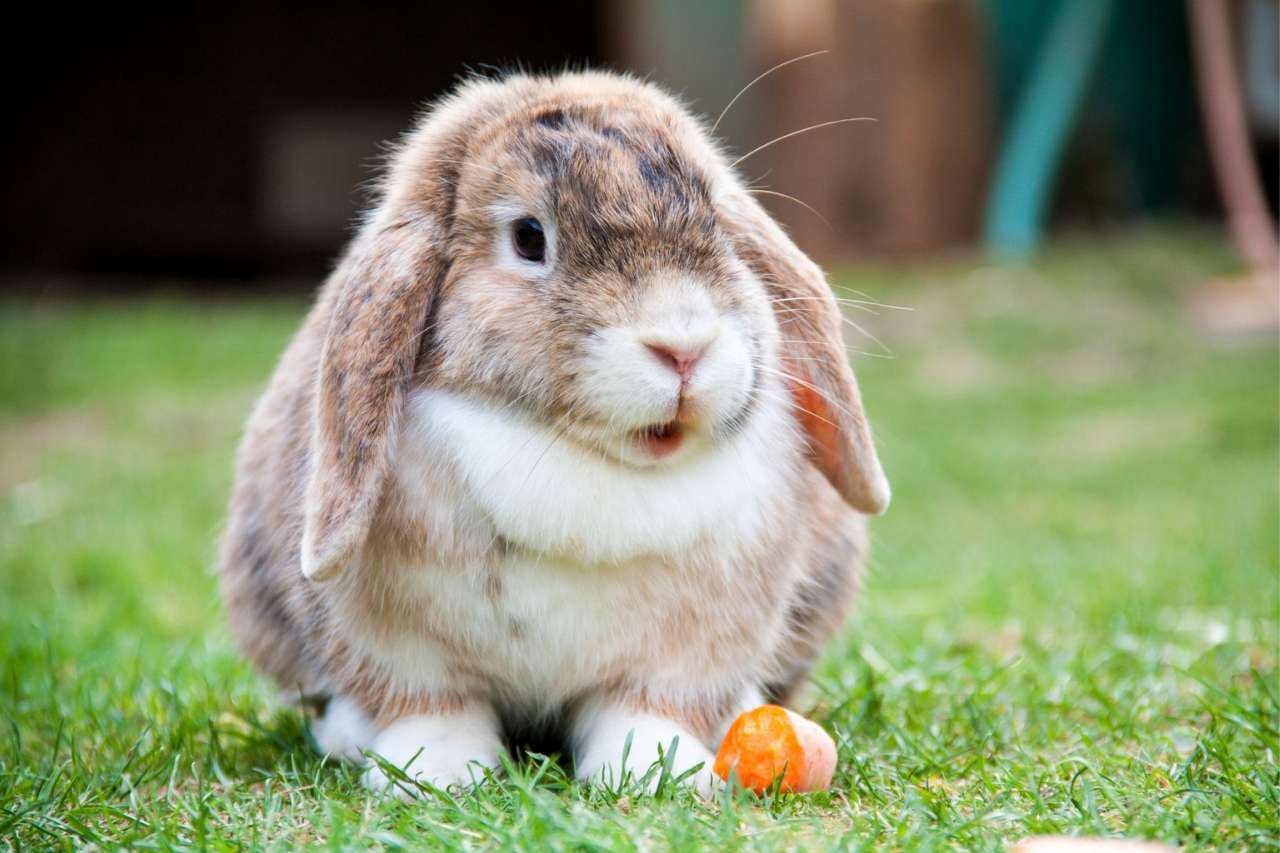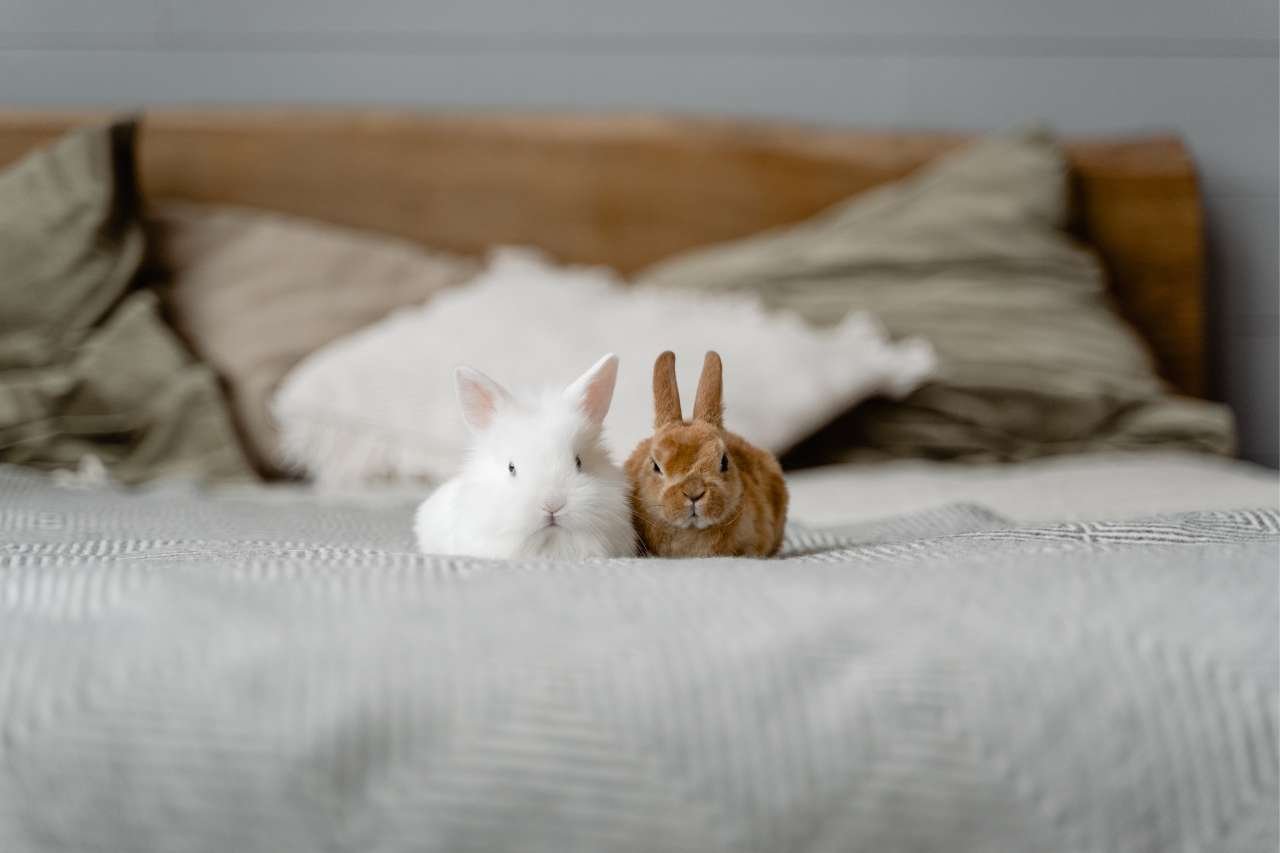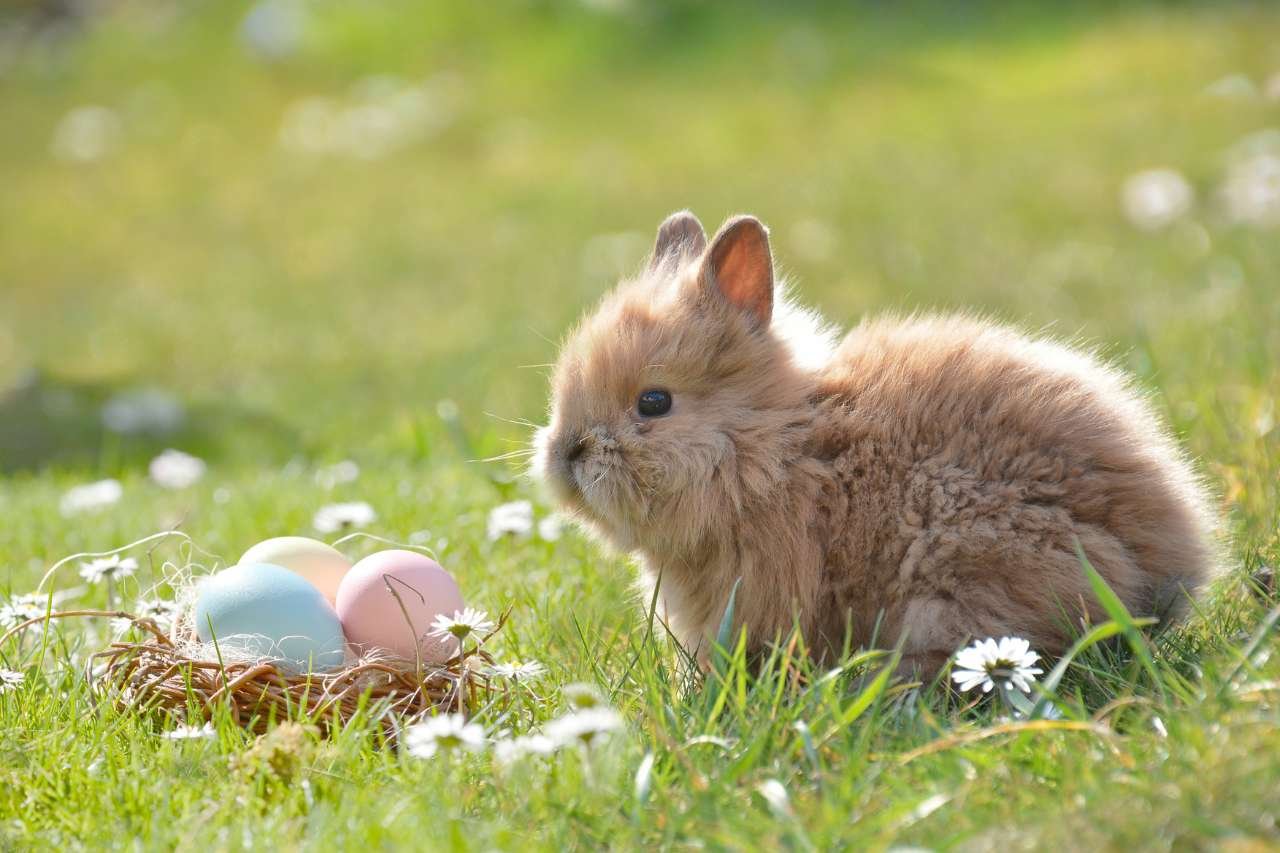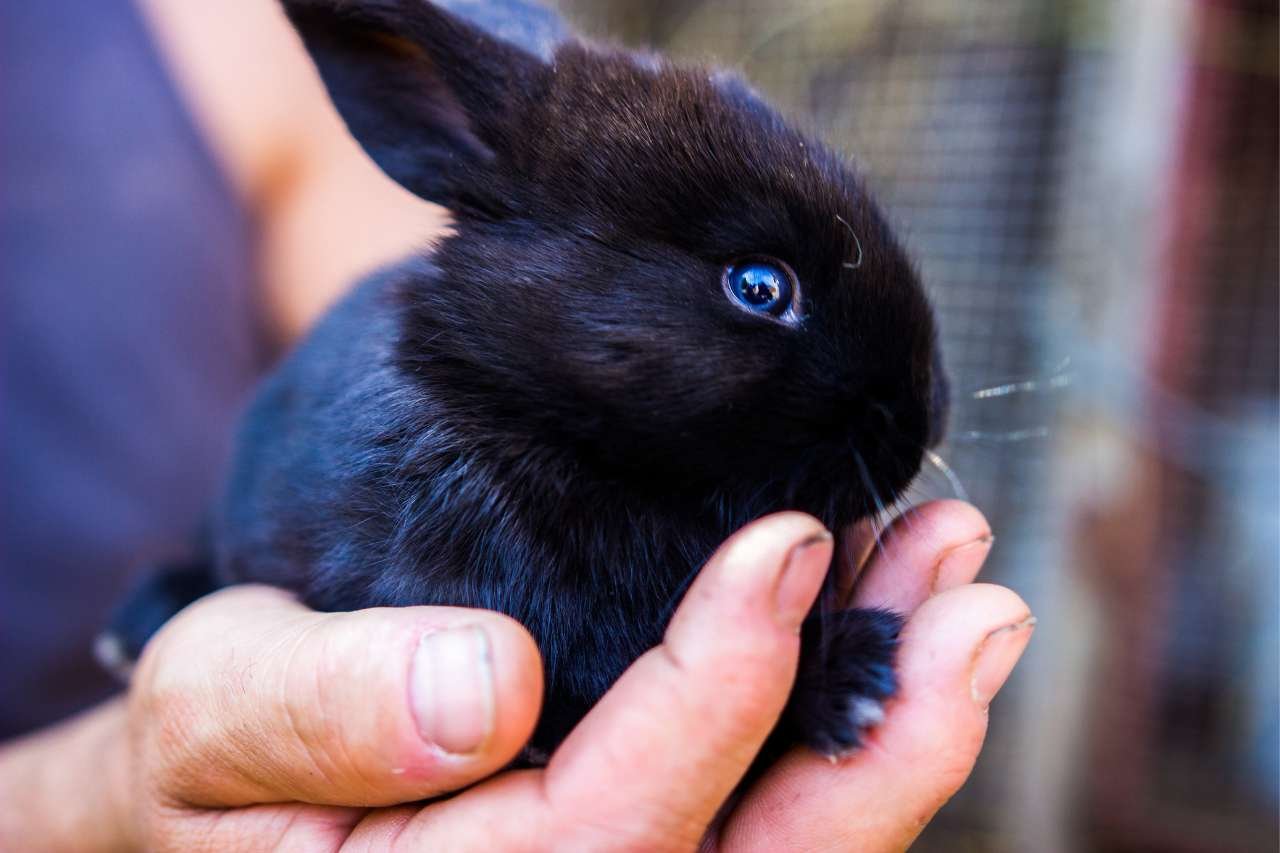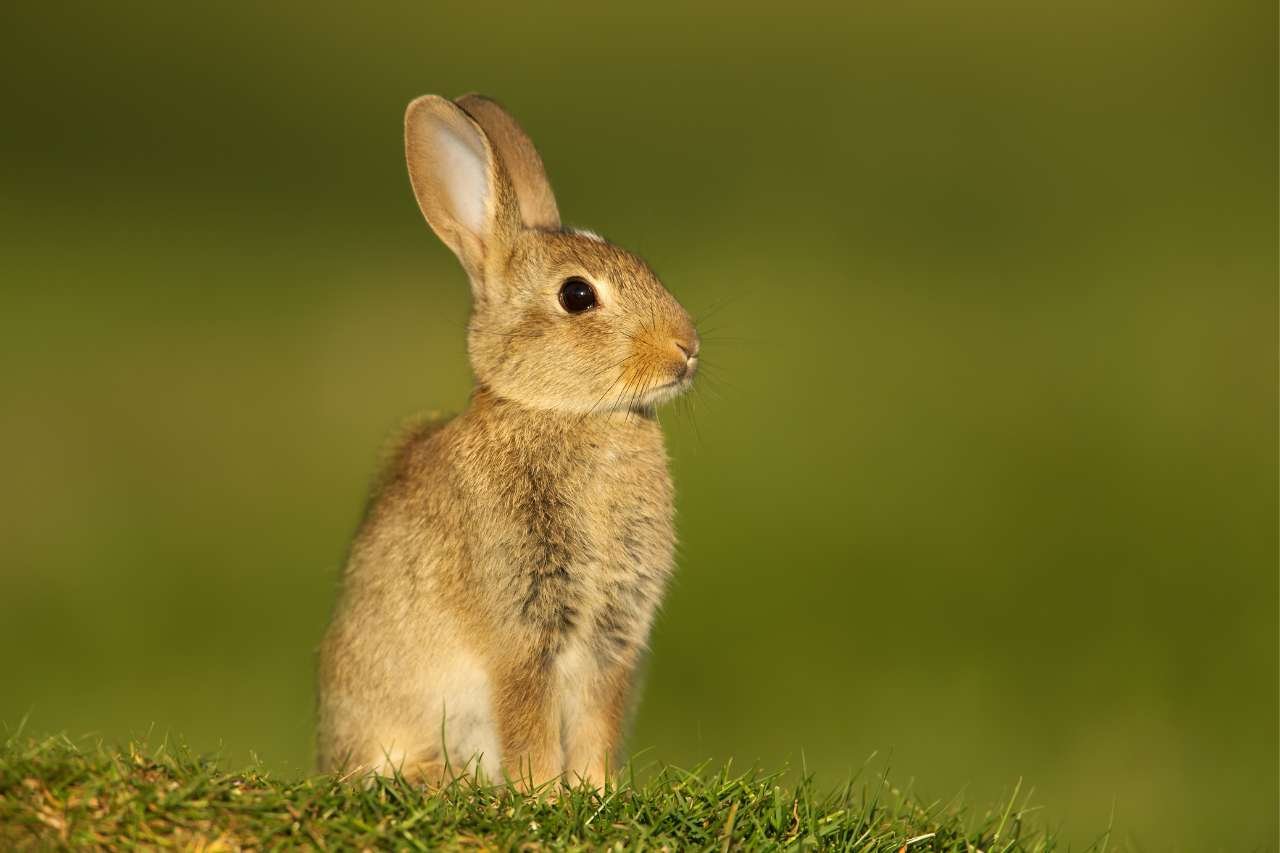People often wonder about What is the difference between a bunny and a rabbit? Both terms are used to talk about the same group of small mammals, but there’s a slight distinction in how we use them.
“Rabbit” is the more official and scientific name for these animals. Meanwhile, “bunny” is a more casual and affectionate way to refer to them, often used when talking about young rabbits or in sweet contexts. This article will help you to understand what is the difference between a rabbit and a bunny.
Key Points
- “Bunny” is an affectionate term used for rabbits, especially young or baby rabbits.
- The primary distinction between a bunny and a rabbit lies in age, with bunnies being young and rabbits being adults.
- Baby rabbits may also be called kittens, kits, or kitties.
- Bunnies are popular as pets, particularly for children, being soft, fluffy, and enjoyable to play with.
- Numerous movies, cartoons, and media portray bunnies positively, often associating them with luck and prosperity.
- It’s crucial to recognize the fragility of these creatures, necessitating careful care, protection, and affection.
The question of whether there’s a difference between bunny and rabbit often arises, especially with famous figures like the Easter Bunny and Bugs Bunny. The term “bunny” is informally used for a rabbit, typically referring to a young or baby rabbit.
While other names exist for baby rabbits, the colloquial use of “bunny” persists, making it a common and endearing way to refer to these charming animals.
Birth and Growth
As we discussing about what is the difference between a bunny and a rabbit? Let’s start the difference from their birth and growth.
Birth and Growth of Rabbits
Rabbits, known for their prolific breeding, give birth to a litter of baby rabbits, commonly referred to as kits. The birth process involves the emergence of furless and blind kits in a nest prepared by the mother, called a doe.
The mother rabbit provides essential care, nursing the kits and ensuring their protection. In the initial days, the kits undergo rapid growth, developing fur and opening their eyes within about a week.
As they progress through distinct life stages—kittenhood, adolescence, and adulthood—their diet transitions from reliance on the mother’s milk to a mix of hay, vegetables, and pellets.
This journey encompasses the nurturing care of the mother, the exploration of their environment, and the eventual transition to independence as fully matured adult rabbits.
Birth and Growth of Bunny
Bunnies, an endearing term often used for young rabbits, experience a charming and rapid journey from birth to maturity. The birth of bunnies involves their emergence as furless and closed-eyed kits, typically nestled in a cozy nest prepared by the mother rabbit, or doe.
This stage marks the beginning of their growth, with the mother providing essential care and nourishment. In the first week, bunnies start developing fur and opening their eyes, showcasing their quick progression.
The transition to solid food, including hay and pellets, follows as bunnies grow, emphasizing their move toward independence. Known for their playful and energetic behavior, bunnies engage in various activities that contribute to their physical and mental development.
This endearing phase highlights the adorable and lively nature of young rabbits, as they mature into full-fledged members of the rabbit community.
Bunny vs Rabbit – Defining Difference Between Bunny and Rabbit
You might mix up “bunny” and “rabbit,” or just lovingly call all of them “cute little bunnies” (we’ve totally done that too).
But what’s the actual difference between bunny and rabbit?
Living Style Of A Rabbit
The living style of a bunny, often referring to a young or small rabbit, shares similarities with that of adult rabbits but also exhibits some distinct characteristics:
Social Behavior:
- Rabbits are social animals that thrive in the company of their own kind.
- In the wild, they often live in groups called colonies.
Burrowing and Shelter:
- Rabbits are natural burrowers, and they create elaborate burrow systems for shelter and protection.
- In domestic settings, they may still exhibit burrowing behavior or seek enclosed spaces.
Chewing and Digging:
- Rabbits have a strong instinct to chew and dig.
- Providing appropriate items for chewing and digging, such as toys and digging boxes, is essential for their well-being.
Grooming:
- Rabbits are meticulous groomers, often grooming themselves and their companions.
- Regular grooming helps maintain their fur and contributes to their overall cleanliness.
Diet:
- A rabbit’s diet primarily consists of hay, fresh vegetables, and pellets.
- They need a high-fiber diet to support their digestive health.
Activity and Play:
- Rabbits are crepuscular, meaning they are most active during dawn and dusk.
- Play is crucial for their physical and mental stimulation. They enjoy toys, tunnels, and opportunities to explore.
Territorial Behavior:
- Rabbits can be territorial, marking their space with scent glands.
- Providing a secure and defined area can help them feel comfortable and reduce stress.
Handling Stress:
- Rabbits are sensitive to stress, and sudden changes in their environment can be unsettling.
- A calm and predictable living environment contributes to their well-being.
Litter Box Training:
- Rabbits can be litter box trained, making them relatively clean animals.
- Providing a designated area for elimination helps maintain a tidy living space.
Living Style Of A Bunny
The living style of a bunny, often referring to a young or small rabbit, is characterized by a combination of playfulness, curiosity, and specific care requirements:
Playful Behavior:
- Bunnies are known for their playful and energetic nature.
- They engage in activities such as hopping, running, and exploring their surroundings with enthusiasm.
Exploration and Curiosity:
- Bunnies are naturally curious animals, and their living style involves exploring their environment.
- Providing a safe and stimulating space with tunnels, toys, and hiding spots allows them to satisfy their curiosity.
Social Interaction:
- Bunnies, like adult rabbits, can be social creatures.
- They may seek companionship from other rabbits or enjoy interaction with their human caregivers.
Diet and Nutrition:
- A balanced diet is crucial for the health and well-being of bunnies.
- Their diet typically includes hay, fresh vegetables, and pellets, tailored to support their growth and development.
Nesting and Resting:
- Bunnies may exhibit nesting behaviors, especially when they feel secure and comfortable.
- Providing a cozy and quiet space for resting, along with suitable bedding, contributes to their overall contentment.
Chewing and Teething:
- Bunnies have a natural instinct to chew, which helps keep their teeth healthy.
- Offering appropriate chew toys is essential, especially during their teething stages.
Handling and Socialization:
- Gentle handling and positive social interactions with humans contribute to a bunny’s well-adjusted behavior.
- Early socialization helps them build trust with their human caregivers.
Safety Considerations:
- Due to their small size and inquisitive nature, bunnies may need a bunny-proofed environment.
- Ensuring that potential hazards are removed or secured helps keep them safe.
Grooming Needs:
- While bunnies groom themselves, certain breeds may require additional grooming, especially those with longer fur.
- Regular brushing helps prevent matting and ensures their coat remains healthy.
Where They Live Most – Bunny And A Rabbit Difference
Rabbits, both in the wild and as pets, inhabit diverse environments. In their natural habitat, rabbits are found in forests, grasslands, and deserts, showcasing their adaptability to various ecosystems. Whether domesticated or wild, providing a suitable living space is crucial for their overall well-being.
Bunny vs Rabbit
While both terms, “bunny” and “rabbit,” are often used interchangeably, the distinction lies in formality. “Rabbit” is the more formal and scientifically accurate term, while “bunny” is an informal and affectionate term.
Regardless of the terminology used, both creatures share similar habitats, thriving in environments ranging from forests to grasslands, showcasing their remarkable adaptability.
Relationship with Humans
Rabbits hold a significant place in human society, serving both as beloved pets and playing roles in various cultural practices. As domesticated animals, rabbits are commonly kept as pets, cherished for their gentle nature and affectionate companionship.
Their role extends beyond the household, with rabbits featuring prominently in cultural traditions and practices.
Whether symbolizing fertility, luck, or companionship, rabbits have woven themselves into the fabric of human culture, adding a touch of charm and symbolism to various aspects of life.
Bunny is a term commonly used in endearing or affectionate contexts, carrying a sense of warmth and charm. It is often associated with cuteness and adoration, portraying these small mammals in a particularly endearing light.
Whether used as a playful pet name or to convey a sense of fondness, the term “bunny” adds a touch of sweetness to our interactions with these adorable creatures.
4 Main Differences Between A Bunny And A Rabbit
Bunny vs Rabbit: Diet
Baby bunnies initially rely on their mother’s milk for nutrition, while adult rabbits have a more diverse diet. In the wild, rabbits forage for various vegetation, including weeds, flowering plants, pine needles, shrubs, and clover. Chewing on tree bark and twigs helps them maintain well-trimmed teeth.
Bunny vs Rabbit: Coat
Baby bunnies are born without fur and typically develop a soft, fluffy coat within about a week. This irresistibly cute fur lasts from a few months to a year before they shed it and grow their smooth adult coats.
Both bunnies and rabbits require warmth to stay healthy, making indoor housing or waterproofed sleeping areas essential, particularly during wet and rainy weather.
Bunny vs Rabbit: Color and Growth
The color of a baby bunny’s coat doesn’t predict its adult color. Many bunnies undergo color changes as they mature. Their initial coat colors may differ from the hues they display as adults.
Bunny vs Rabbit: Name
Baby rabbits are officially known as kittens, kits, or kitties, and colloquially as bunnies. Rabbits, on the other hand, may be referred to as coneys or cottontails. A female rabbit is called a jill or a doe, while a male rabbit can be termed a jack or a buck.
Understanding these distinctions in diet, coat development, growth, and nomenclature provides insights into the unique characteristics of bunnies and rabbits.
Conclusion about What is the difference between a bunny and a rabbit?
In conclusion, the difference between a bunny and a rabbit primarily lies in the informality and affection associated with the term “bunny.” While scientifically and formally, both words refer to the same family of small mammals, “rabbit” is the more precise and accurate term. “Bunny” is often used in endearing contexts, especially when referring to young or baby rabbits. These terms are used interchangeably, reflecting the playful and affectionate nature with which humans regard these charming creatures. Whether enjoying their varied diet, observing the evolution of their coats, or appreciating the diverse names they are given, understanding the subtle nuances enriches our appreciation for these delightful animals. Ultimately, whether you call them bunnies or rabbits, the joy they bring to our lives is universal.
